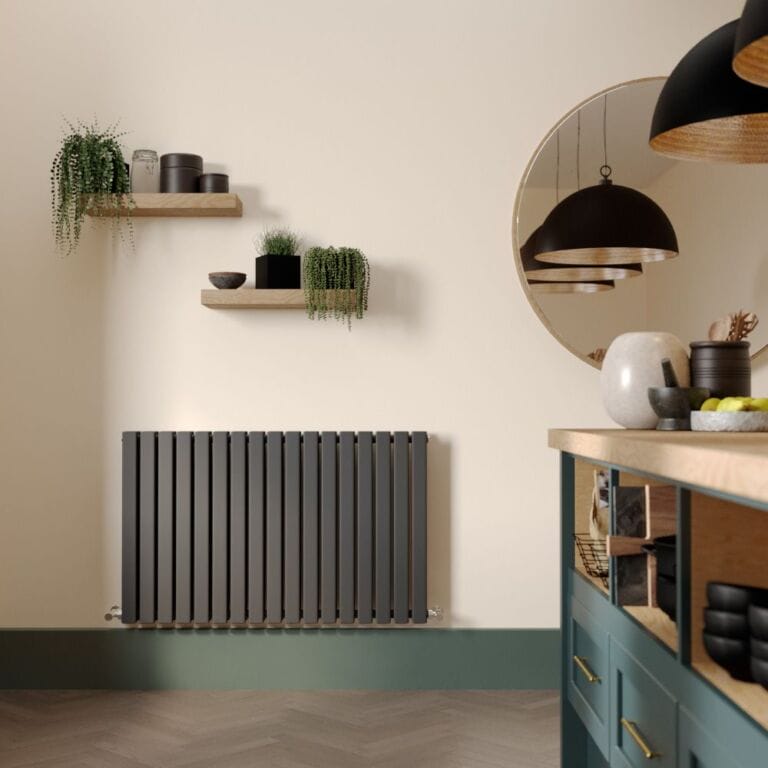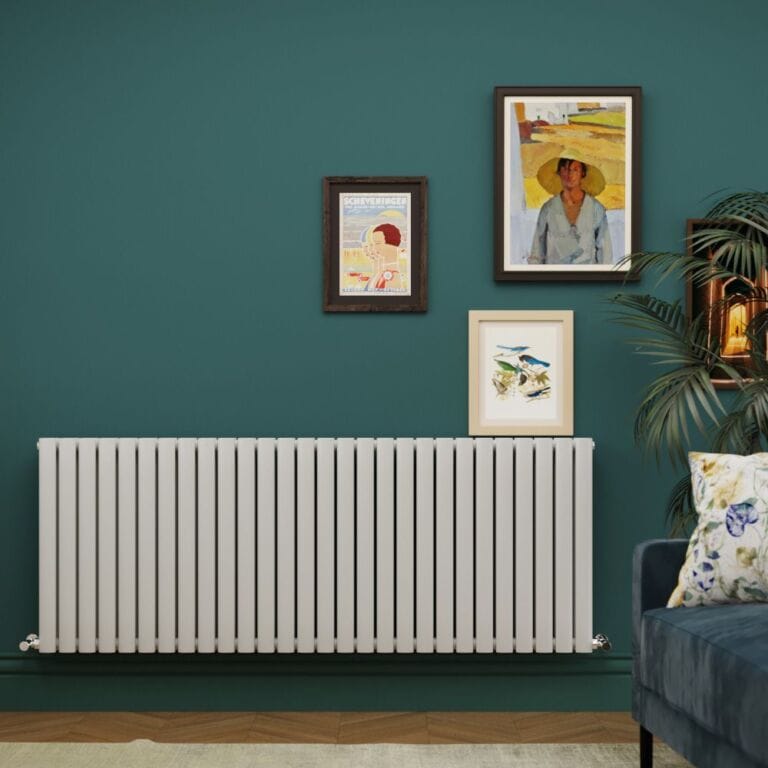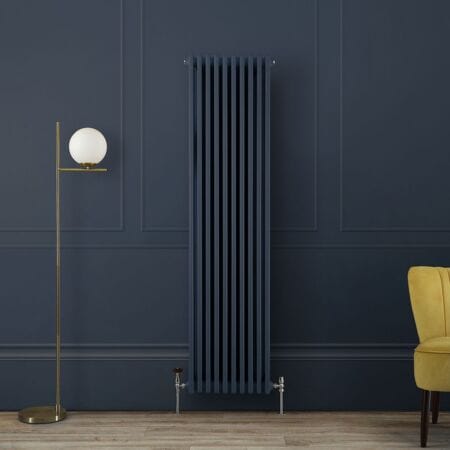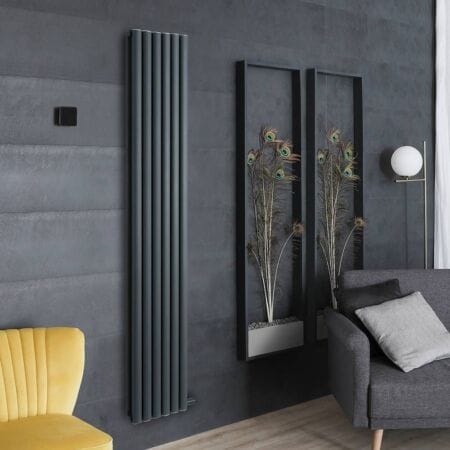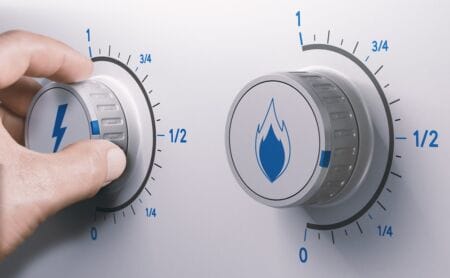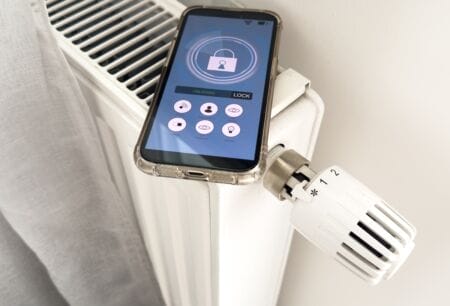Contents
ToggleAn introduction to radiator bleeding
In this comprehensive BestHeating guide, we will walk you through the essential steps to properly bleed a radiator, ensuring optimal heating efficiency in every room of your home.
As experts in radiators and domestic heating systems, we understand the importance of radiator bleeding, and by following our detailed instructions, you can significantly improve radiator performance and efficiency.
Key points we will cover in this article, include:
-
- The importance of regularly bleeding radiators to maintain peak performance and energy efficiency.
-
- Step-by-step instructions on how to properly bleed a radiator, including the necessary tools and safety precautions.
-
- Guidance on identifying when a radiator needs to be bled, such as if it’s not heating up evenly or making unusual noises.
- Tips for maximising the heating output and lifespan of your radiators through proper maintenance.
Why do you need to bleed radiators?
Before we delve into the steps of bleeding a radiator, let’s understand why this process is essential.
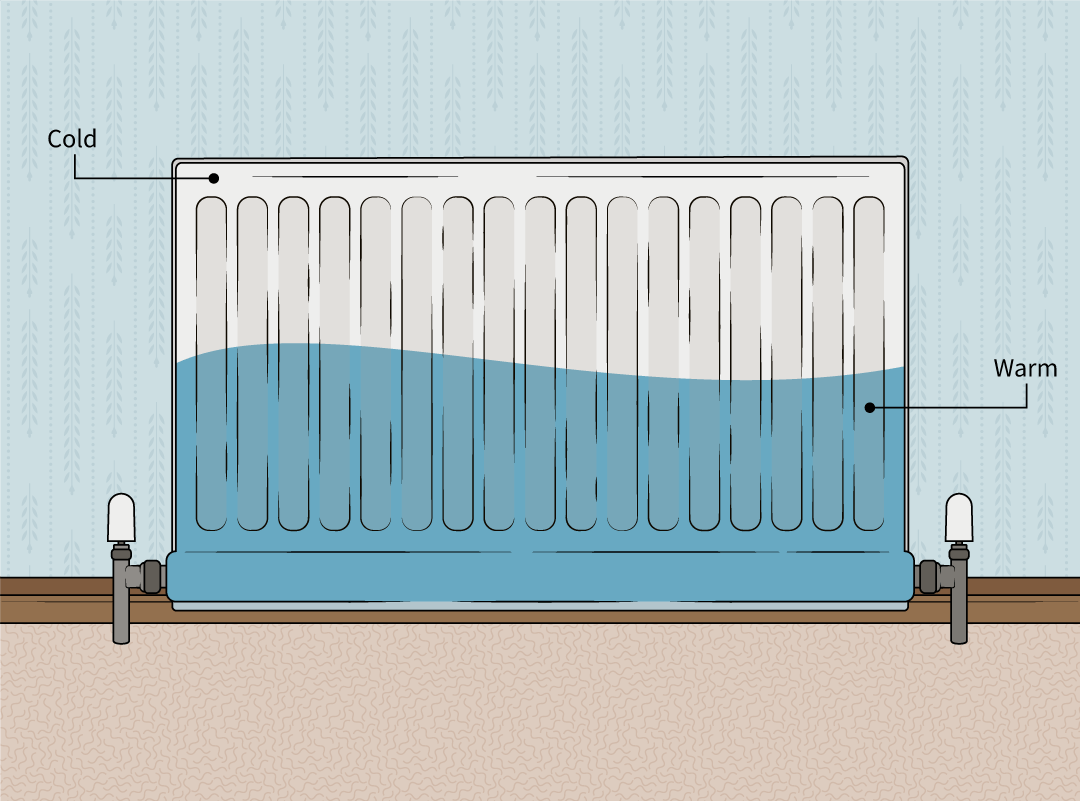
Over time, air can accumulate inside your heating system, causing pockets of trapped air within the radiators. To simplify, think of air pockets like bubbles beneath the radiator’s surface.
This trapped air prevents hot water from circulating effectively, leading to cold spots and reduced heating efficiency.
By bleeding your radiators, or ‘popping the bubbles’, you release the trapped air, allowing hot water to flow freely and evenly throughout the system, and maximising its performance.
How do air pockets form in radiators?
A more technical analysis of how air pockets form in radiators is as follows:
- Dissolved gases emerge from solution as water is heated up or cooled down over time.
- Minor leaks or maintenance can introduce air into the system.
- Corrosion can lead to the production of hydrogen gas inside steel radiators. If bleeding is needed on a regular basis, check for leaks and consider a system cleanse and inhibitor.
When should you bleed a radiator?
If you feel any cold spots
Bleeding a radiator is required if it is not working as efficiently or as effectively as you want it to.
You can tell if this is the case by feeling the surface of your radiator. In many cases, you’ll find a cold spot around the top of the radiator surface, and could find that your radiator doesn’t get hot at all.
If you experience anything like this with your radiators, the chances are that you’ll need to take steps to remove the air by bleeding the radiator.
If your radiator is making noises
Another signal that you may have air building up and need to bleed your radiator is when you can hear clanging or prolonged groaning when you switch on your central heating.
There could also be other causes for your radiator to make noise, but generally, if you have a clunk or a clang in your heating system, its because you need to bleed your radiators.
When radiators are slow to heat up
After long summer downtime
When you’ve had no need to switch your radiators on for a significant period of time in summer, it is well worth bleeding them before the colder winter months when you need them to be at peak performance level. Similarly so, look to bleed the system after draining or refilling any parts of it. or after you’ve drained/refilled parts of the system.
Every few months
Simply as a general preventative maintenance measure, it makes sense to bleed your radiators every few months. As alluded to above, aim to bleed the system to coincide with the beginning of heating season.
Tools required for bleeding your radiator
To successfully bleed your radiator, you will need the following tools:
-
- Radiator key: A radiator key is a specialised tool designed to fit into the bleed valve, allowing you to open it easily. If you don’t have a radiator key, you could also use a flat-head screwdriver. Note: Most UK bleed screws are a 5 mm square surface that a standard key will fit. Older radiators and certain heated towel rail models may use slotted or hex heads, which can be opened using a flat‑head screwdriver or Allen key as appropriate. “Universal” multi‑keys and multi‑tool cabinet keys often include a 5 mm square that will work perfectly with the vast majority of modern radiators.
-
- A container: A washing up bowl or similar to place under the radiator to catch any excessive water.
- Cloth or towel: Keep a cloth or towel handy to catch any water that may escape during the bleeding process.
- Gloves and torch: Have gloves handy as a safety precaution, and a torch for visibility, especially if you’re bleeding your radiator at night or with little available light.
- Boiler manual: To check the steps to take to re-pressurise your system for existing boiler models.
Step-by-step guide to bleeding a radiator
1. Choose which order to bleed your radiators
It is advisable to begin with the radiator that is situated furthest from the boiler on the ground floor, before working towards the boiler, then moving upstairs and repeating the process furthest‑to‑nearest. This will help push trapped air up and out of the system efficiently.
2. Turn off the heating system
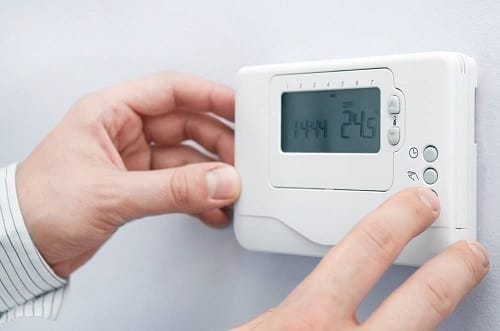
Before starting the bleeding process, make sure to turn off your heating system.
This precautionary step ensures your safety and prevents any accidental burns or scalding from hot water.
3. Identify the radiator bleed valve
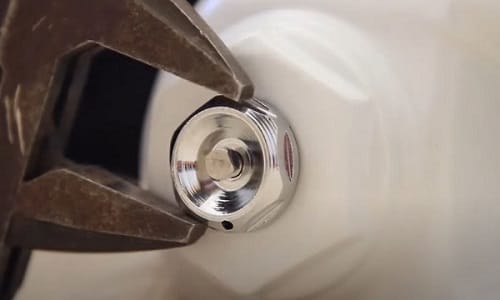
Locate the bleed valve on your radiator. The bleed valve is usually located at the top of the radiator, on one side. It resembles a small square or hexagonal nut.
4. Prepare for bleeding
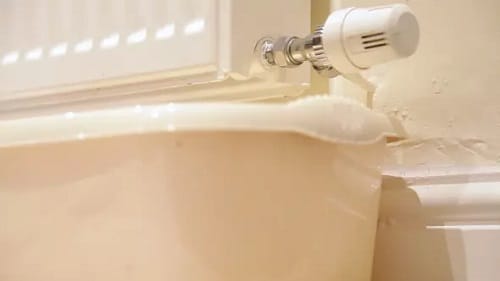
Place the cloth or towel or washing up bowl below the bleed valve to catch any water that may drip out during the process. This prevents any water from staining your flooring or carpets.
5. Insert the radiator key
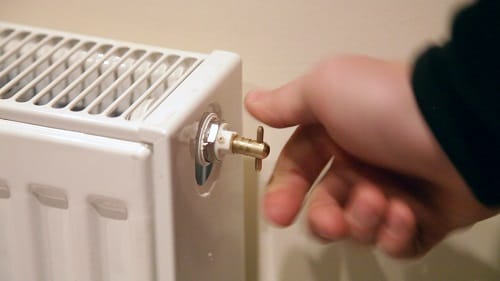
Once you’ve identified which type of radiator key will work, insert the key into the bleed valve and turn it anti-clockwise for a quarter of a turn initially. You should hear a hissing sound as the trapped air begins to escape. Don’t try for more than one full turn.
6. Close the valve once trapped air escapes
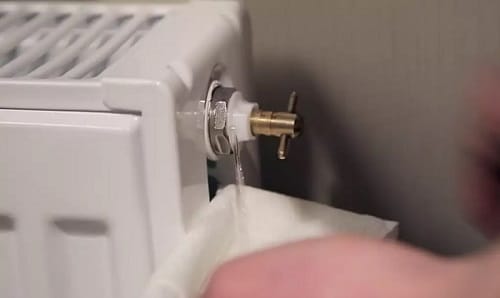
As the hissing sound stops and water starts to trickle out of the bleed valve, it indicates that the trapped air has been released.
Once a steady stream of water appears, close the bleed valve by turning the radiator key clockwise.
Typically, it will only take a few seconds for water to emerge, but larger radiators could take up to a minute.
7. Check for leaks
After bleeding the radiator, inspect the bleed valve for any signs of leakage.
If you notice any leaks, tighten the bleed valve gently until the leak stops – but be very careful not to overtigten, as this may damage the “O” ring and could lead to further problems.
8. Repeat the process
Repeat the bleeding process for all radiators in your home, working your way around the house in the order specified in step 1.
This will ensure that all radiators are free from trapped air and operating efficiently.
9. Re-pressurise your boiler
Bleeding radiators leads to the release of trapped air and a little water, so pressure may drop. Top up your boiler pressure level to somewhere between 1.0 and 1.5 bar when cold (check your manual for specifics; 2 bar when hot is a typical gauge). Some older models use an internal filling key, with most others use a filling loop to re-pressurise.
10. Switch the heating on and check on radiators
Turn the heating on and check your radiators are without cold spots, heating the space evenly and not making a racket. If any of those problems still persist, consult the Troubleshooting section below.
Troubleshooting tips for radiator bleeding
While bleeding radiators is a straightforward process, there might be instances where you encounter some challenges.
Here are some troubleshooting tips to address the common issues you may come across when bleeding radiators.
No hissing sound or water flow
If you don’t hear a hissing sound when you turn the radiator key or no water comes out, it is worth checking the system pressure is sufficiently high.
If it is, it could indicate that there is no trapped air in the radiator.
Check for other issues that might be affecting your heating system’s performance.
Ensure that the heating system is turned off and that the radiator is cool before attempting to bleed it.
Continuous hissing sound
If you hear a continuous hissing sound even after water starts flowing out, it may indicate that there is a significant amount of trapped air in the radiator.
Allow the radiator to bleed for a longer duration until the hissing sound stops completely (but be sure to have a bigger bucket handy to catch the drips!).
Water leaking from bleed valve
If water continues to leak from the bleed valve even after tightening it, there might be a worn-out or damaged valve.
In this case, it’s best to replace the bleed valve to prevent further leakage and ensure the efficient operation of the radiator.
You could even explore the option of an automated bleed radiator valve to save you time and prevent persistent issues.
Uneven heating after bleeding
If you notice uneven heating in your home even after bleeding all the radiators, there could be other underlying issues affecting your heating system.
Check for any sludge or debris buildup in the system and consider flushing it out to improve circulation.
Persistent cold spots
If cold spots persist in some rooms after bleeding the radiators, it might be a sign of underlying problems in the heating system.
A consistent build-up of gas can often indicate corrosion, leaks, or poor inhibition. Check for leaks, consider a chemical cleanse and a new inhibitor.
If these measures have little effect, it might be time to reach out to a professional heating technician to inspect and diagnose any potential issues.
The benefits of properly bleeding radiators
Bleeding your radiators on a regular basis offers several key home heating benefits.
Enhanced efficiency and even heat distribution
By removing trapped air, hot water circulates freely, ensuring even heating throughout your home.
Energy savings
By eliminating needless boiler cycling and overheating, a heating system with bled radiators will consume less energy, leading to reduced utility bills and a more eco-friendly household.
Increased comfort & warmth
No more cold spots! Properly bled radiators provide consistent and comfortable warmth to every room of your home.
Lower noise levels
Bleeding radiators can bring about a welcome dismissal of irritating gurgling and knocking sounds so you can watch your favourite programmes in peace again.
Extended heating system lifespan
Removing air reduces the strain on your heating system, potentially prolonging its lifespan.
Additional maintenance tips for an efficient heating system
Bleeding your radiators is just one aspect of maintaining an efficient heating system.
Here are some additional tips to keep your heating system running optimally.
Bleed at the start of heating season
It makes perfect sense to bleed your radiators just prior to the colder winter months when you’ll need them to provide optimal performance levels.
Conduct regular inspections
Schedule regular inspections by a qualified heating technician to identify and address any issues with your heating system before they escalate.
Clean radiators regularly
Clean your radiators regularly to ensure proper airflow and prevent dust and debris from accumulating within the system.
Take a look at our radiator cleaning guide for additional help.
Keep radiators unobstructed
Whilst beneath the window is generally considered the best place to position a radiator, the presence of heavy curtains can restrict convection and block that even level of heat distribution that a bled radiator could provide.
Balance your heating system
If you notice some radiators are significantly hotter than others, consider balancing the system by adjusting the radiator valves.
This will ensure an even distribution of heat throughout your home.
For tips on doing this yourself, you could check out our guide on balancing your home’s heating.
You may need a power flush
Debris can very quickly build up in a heating system.
Consider power flushing to remove any sludge or debris buildup that could be hindering the system’s performance.
Keep an eye on boiler pressure
The recommended boiler pressure is generally between 1.0-1.5 bar when cold, and 2.0 when hot, but consult your boiler manual for more specific guidance to achieve the very best performance from your designer radiators.
Keep your heating system in top shape with BestHeating
You should now be equipped with the knowledge to properly bleed your radiators and maintain an efficient heating system.
By following the step-by-step guide and troubleshooting tips provided in this article, you can ensure consistent and comfortable warmth in your home throughout the colder months and beyond.
Remember, regular maintenance is the key to extending the lifespan of your heating system and optimising its performance.
Take the time to care for your system, and it will reward you with reliable and cost-effective heating for years to come.
If you want to learn about how to bleed a heated towel rail, visit our guide.
Be sure to consult the BestHeating Advice Centre for any more helpful heating guidance, and explore our home heating collection online if it is time to upgrade your radiator.
And let us know your favourite heating hacks in the comments below, or via Instagram, Facebook or X.
Bleeding a radiator – Frequently asked questions
The time it takes to bleed a radiator properly can vary according to how much air is trapped within, and the size of the radiators that are being bled.
Usually, it will take between 20 and 30 seconds to effectively bleed a radiator, but it might take up to a full minute in the case of larger radiators.
Get help and advice on bleeding radiators with our expert radiator bleeding guide.
How long it takes to bleed a radiator effectively can fluctuate in line with how much air is trapped inside, and the size of the radiators you are bleeding.
In most cases, it will likely take between 20 and 30 seconds to bleed a radiator, but it could take up to a full minute for larger radiators.
Get help and advice on bleeding radiators with our expert radiator bleeding guide.
Over time, air can become trapped within your radiators, leading to cold spots and a less-than-optimal performance from your home heating devices.
If you don’t bleed your radiators, the issue will worsen over time. It could lead to your central heating eventually not being capable of reaching your preferred temperature, even when turned up to the max.
Consult our guide on How To Bleed A Radiator to help make sure your home heating remains in premium shape, and continues to work to full effect.
Yes, it is perfectly normal for water to escape when a radiator is bled.
You’ll likely notice some drips emerging when initially turning the bleed screw in an anti-clockwise direction. And water would pour out once the air was released, if the valve was to be opened fully.
However, completely opening the valve should be avoided. For a more detailed insight into the best practice to follow when bleeding radiators, take a look at our Advice Centre guide, How To Bleed A Radiator.
In properties with two or more floors, you should bleed downstairs radiators first.
Begin with the radiator situated furthest away from your boiler or central heating system. (Also start with this radiator in single-storey homes or bungalows).
You should bleed hot water radiators on at least an annual basis. There’s more tips and advice on how to do so safely in our full Advice Centre blog, How to Bleed a Radiator.
You should never bleed a radiator with the heating switched on.
You would run the risk of scalding or burning yourself just from touching the radiator or radiators, whilst hazardous hot water could also spurt out.
Read our Advice Centre blog, How to Bleed a Radiator, for key tips on how to complete the process of bleeding radiators safely.
A bleed valve is the small metal square or screw located within the surrounding nut, usually found at the top of the radiator corner, either on the left or right hand side.
It can be opened to release trapped air from within your radiators or heated towel rails.
Our guide on How to Bleed a Radiator offers a more detailed insight into bleed valves, and how they can be adjusted to help you make the most of your home heating.
A specialist radiator bleed key is recommended for bleeding radiators. You can usually find bleed keys at your local DIY or hardware store.
If you are unable to source a bleed key or have misplaced the one you own, a flat-blade screwdriver can usually be used as a substitute.
Read our guide on How to Bleed a Radiator for key tips on bleeding your radiators.
It depends what type of bleed screw is fitted to your radiator.
For radiators with a slotted bleed screw, a simple screwdriver represents an ideal alternative to a bleed key. Just insert the screwdriver into the slot and turn it in a counter-clockwise direction to bleed the radiator.
If your radiator features a different sort of bleed screw, perhaps including a square or hexagonal orifice within it, there are other alternative options.
You could use an Allen key, spanners or a plier to grip and twist the nut for an effective radiator bleed.
If you want to know more about the basic principles of the process, check out our Advice Centre guide, How to Bleed a Radiator.
Radiators need bleeding to release trapped air, which can prevent hot water from travelling around the radiator.
Essentially, you need to bleed a radiator when necessary to ensure your heating is working as efficiently as possible, and that your radiators are warming up your chosen space in adequate time.
Our guide on how to bleed a radiator will guide you through the process.
Off. You should never try to bleed radiators with the heating switched on for safety reasons.
Potential injury risks attached to the spilling of hot water include burning and scalding. Check out our guide on how to bleed a radiator to perform the task safely.
There can be audible indications that your radiators require bleeding in the form of gurgling noises. Another sign is when a radiator is taking longer than usual to heat up.
And you should feel all the radiators in your home for cold spots – usually the top section will feel much colder than the bottom if bleeding is required.
The radiator or radiators could even be completely cold in extreme cases. Our guide on how to bleed a radiator can help you rectify the issues.
And if a brand new radiator is required, be sure to browse our radiator buying guide for inspiration.
The bleed valve can usually be found at the top of a radiator, at one of the sides.
On older radiators, it often has the appearance of a round hole with a square inside, while on more modern designs it looks more like a nut with a screw in the centre.
For further help with regards to bleeding radiators, visit our Advice Centre guide on how to bleed a radiator. Or, for inspiration regarding the best radiator models to consider for your home, explore our comprehensive radiator buying guide.

John Lawless is SEO Manager at BestHeating and a recognised expert in home heating. With over a decade of experience in the industry, he blends technical insight with practical advice on everything from energy efficiency to radiator design, and more. John’s work has featured in national media and leading home & garden publications, and he leads the editorial strategy for the BestHeating Advice Centre – helping homeowners make smarter heating choices with confidence.

